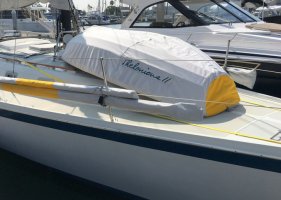Retired from newspapers and television, currently sailing Thelonious II, a 1984 Ericson 381.

Yes, yet another cover. But the dinghy is wood, with Brightside paint and some exterior varnish, so a cover beats maintenance.
I have invented many arguments to skip the patterning steps for these canvas projects, utilizing my amazingly accurate eyeballs, a few quick measurements, a rough sketch, and then Jack Daniels. I have found this method successful in making a sloppy...
You do not have permission to view the full content of this entry.
Log in or register now.




